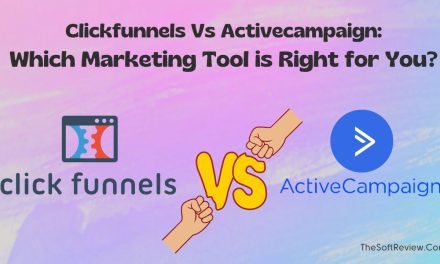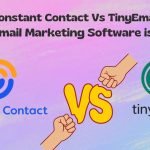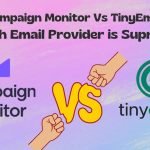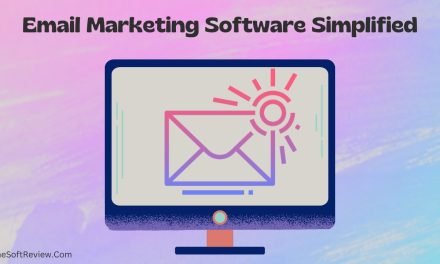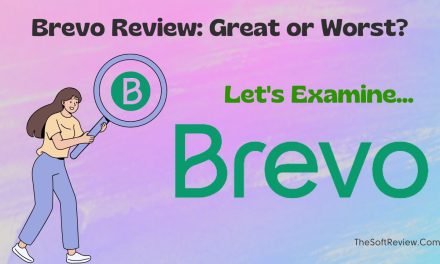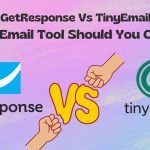
What is Email Marketing? Discover a Strong Marketing Channel
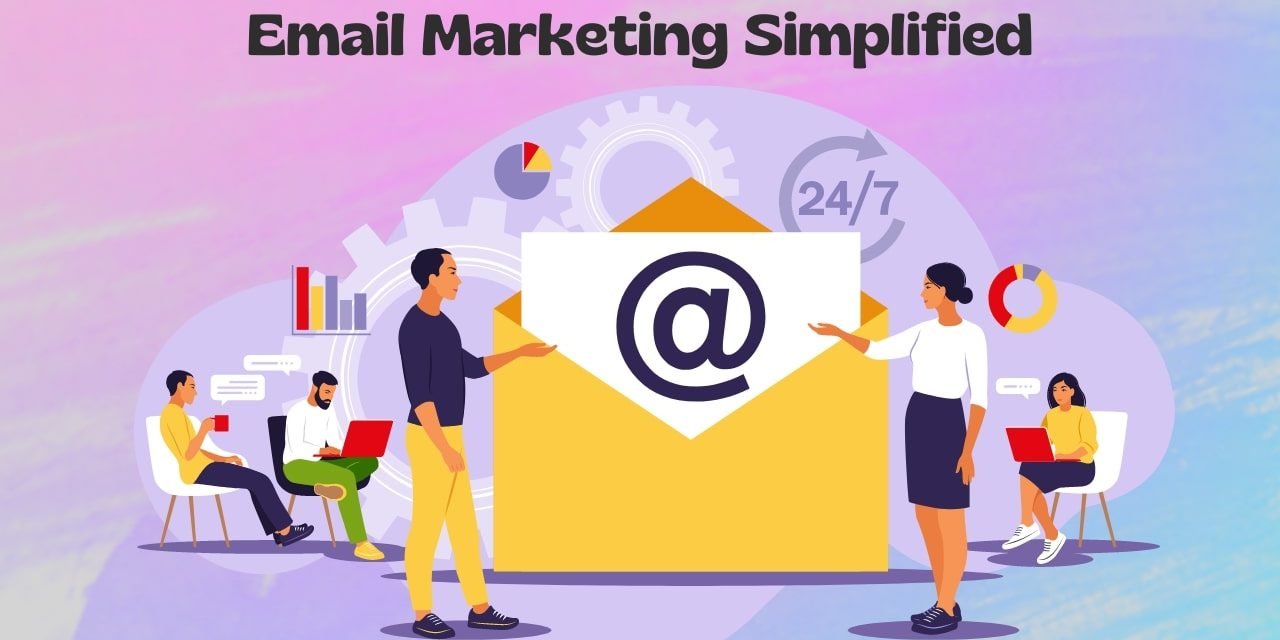
Nowadays, when you get so many digital marketing channels to attract new customers and make a sale, email marketing is still the most effective one to establish brand awareness.
But why email marketing is unique and how effective it would be for your business are the logical questions to examine before you think of starting.
To clarify, in this blog post, we will discover what email marketing is and how it works with all its essential aspects to determine whether you should adopt it!
What is Email Marketing: Different Components and How Does it Work?
Email marketing is a strategy of connecting with potential customers, promoting services, and making sales. It is a crucial part of digital marketing, which entails creating an email owners’ list, segmenting it and sending personalized marketing emails and analyzing the reports from anywhere in the world.
As it is all about email, email marketing works by sending out personalized emails to people in an organized way. But, how you plan and send your emails makes the difference!
You can use traditional emailing platforms like Gmail, Outlook, and others to send emails or use dedicated email software to scale it up!
Let’s go through the five core components of email marketing and understand how the process works:
1. Accumulating Email Addresses:
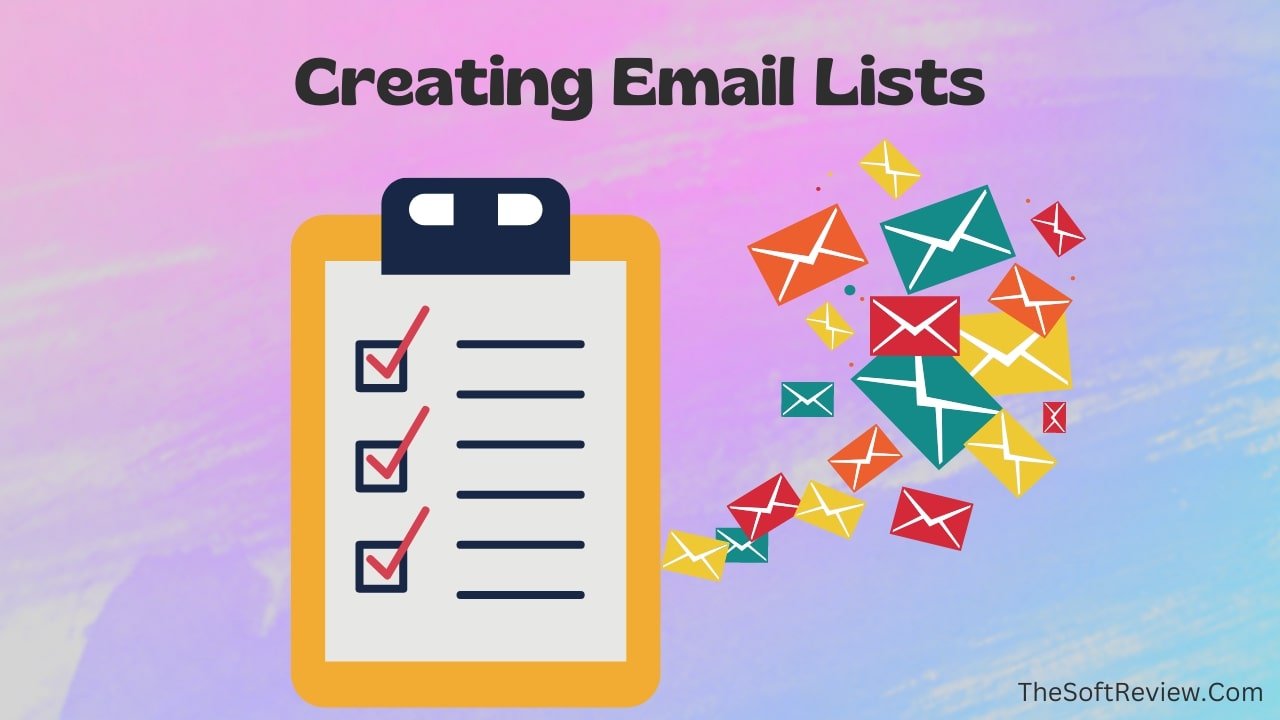
At the first phase of email marketing, marketers gather potential customers’ email addresses and create lists so that they can connect with them and promote their businesses. Depending on your business strategy, you can collect prospect’s emails and create a list in many ways. For example, if you have a website,
- You can integrate a CRM (customer relationship management) software, set up an email signup form and collect visitors’ emails when they sign-up to your newsletter.
- You can add a live chat bot and collect prospects’ email.
The ultimate goal of this stage is to collect customer data , and once you build a list of your targeted audiences, the process moves forward.
2. Lead Qualification and Segmentation:
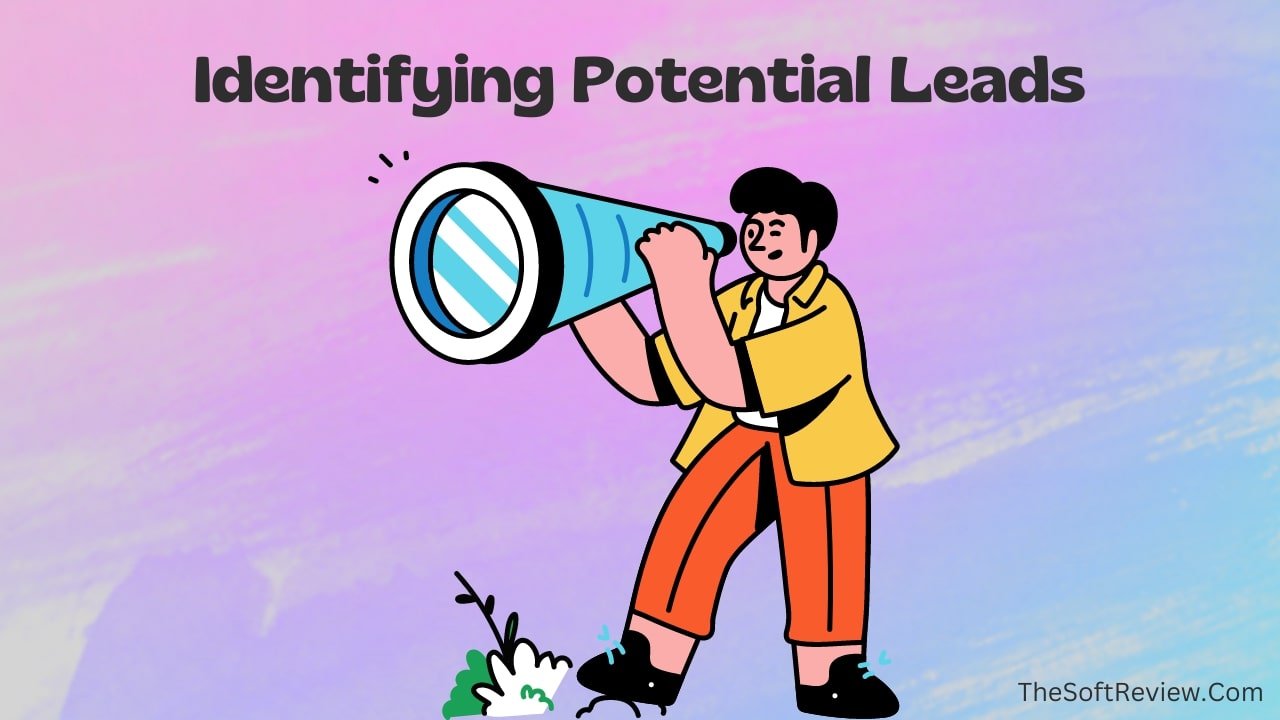
Suppose a marketer has collected 100 emails and created a list, now the step is to clean up the list and segment them based on any information the marketer has about the email owners.
Lead qualification means identifying valid email addresses and cleaning up the list. For example, if you have email lists on Google Sheets you can add an email validator (ClearOut, Mailveteran, and others) to find valid emails likely to convert.
Segmenting a list involves dividing your emails into groups based on additional information like where they live, their age, time zone, buying behaviors, and others so that you can exactly send them what they are interested in.
3. Copywriting and Designing Emails:
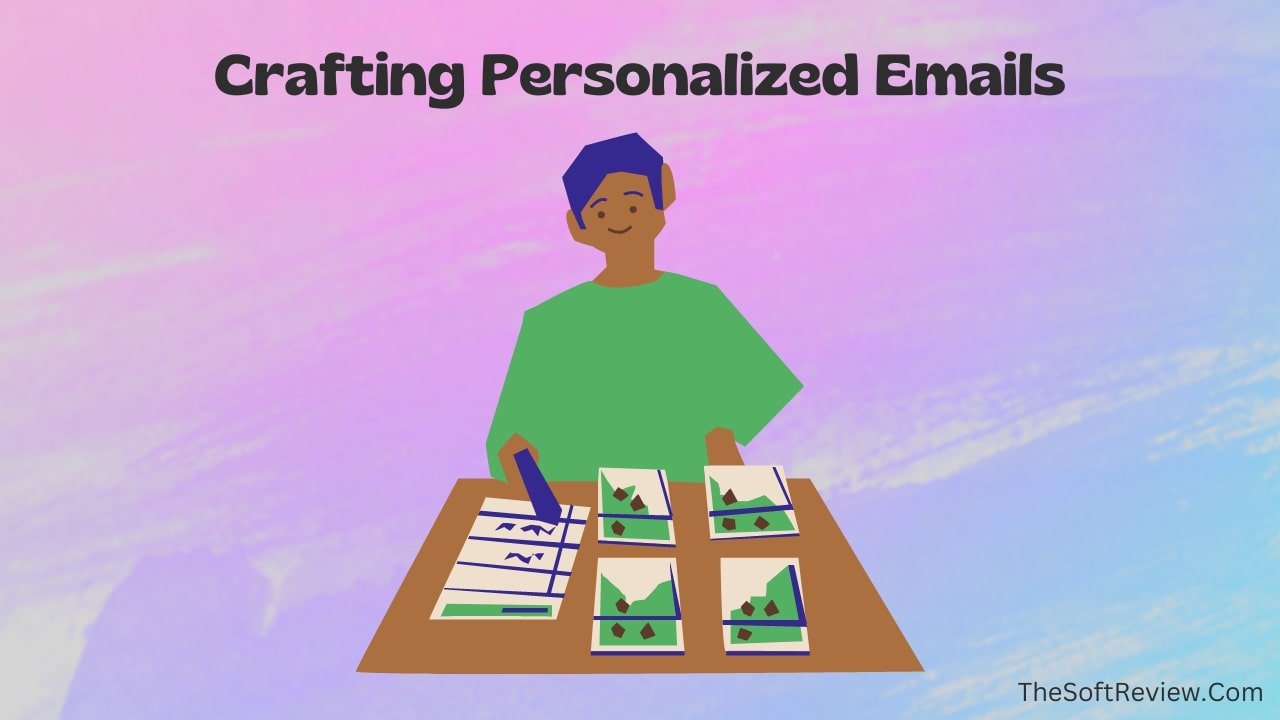
Once marketers have a valid email list with proper segmentation, this is the step to create personalized emails for the prospects. In this step, email marketers craft engaging copy for each user segment so that it becomes easy to attract readers’ attention, educate them about the products, and convince them to take action.
Along the way, marketers add visual elements inside the email letters to make them more compiling. Marketers design emails using a drag-and-drop designer within a dedicated email tool or even using various integrations on Gmail.
It’s like sending personalized letters to a bunch of friends and inviting them for a get-together!
4. The Email Sending Process:
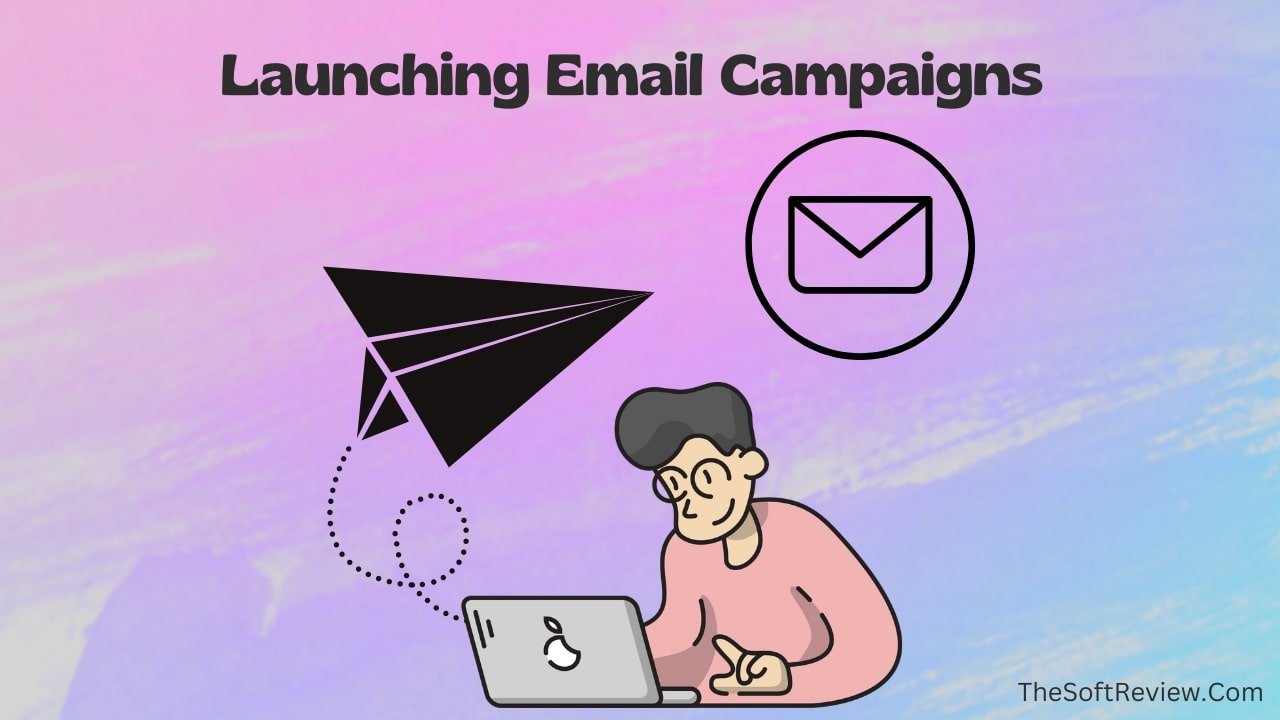
When marketers are ready with everything to run their email marketing campaigns, they use various email marketing tools or generic email providers like Gmail, or others to send out emails according to the list.
The process involves sending well optimized emails in batches. Marketers use both email marketing tools and generic email service to send out emails in bulk. However, using a dedicated email sender offers some more advanced features like advanced segmentation and automation features . You can read our blog to learn about email marketing software in details.
5. Tracking Email Campaigns:
The last stage of running an email marketing campaign is to monitor the performance of how your audience is reacting to the emails! And it is essential to know the outcome of your effort and where you need to improve.
To do that, marketers use various analytical tools to track how many emails were sent, opened, clicked on the link, and converted. The primary aim is to measure results and learn what works best for your market.
Again, a dedicated email software helps in this process with tools like A/B testing, analytical dashboard, and more. You can also track your email’s performance using Google Analytics as well.
And when we combine all five components, we do email marketing.
For instance, you build a list of 150 emails, validate and segment them, craft compelling copy for each segment with powerful subject lines, call-to-actions, and you send the emails and track the results.
This is how email marketing works, but as a strategy, each phase has its own significance, and there are some best practices that we will talk about in the later section of this discussion.
Before that, let’s discuss some more details about email marketing-
- The popular email types that email marketers send
- What makes email marketing so unique to other offline and digital marketing option
- The disadvantages of email marketing
- And how you know whether email marketing is perfect for you or not
Different Email Types in Email Marketing
Depending on the purpose, marketers send various types of marketing emails:
A. Welcome Emails:
A welcome email denotes emails sent to welcome new subscribers when they join an email list. It is generally used to build relationships with new subscribers.
B. Newsletters:
A newsletter is a type of email that contains news, updates, and educational content about a business. It is generally sent to inform all the subscribers about recent updates and activities.
C. Promotional Emails:
Promotional email means advertising products and services to all users, including those who have purchased a service before or have yet to purchase it. It can contain promotional offers, discounts, coupons, and other incentives to encourage new customers to buy and older customers to buy again.
D. Transactional Emails:
These emails are sent based on specific customer events, such as a sign-up to a subscription or purchase. These emails aim to provide customers with helpful information about their transactions.
E. Abandoned Cart Emails:
Abandoned cart emails are sent to customers who have added items to their shopping cart but did not complete the purchase. These emails can remind customers of the items in their cart and encourage them to complete the purchase.
F. Survey Emails:
Survey emails are sent to gather customer feedback about their experience with the company, products, or services. They can be used to improve the customer experience and tailor future email campaigns.
G. Security Emails:
These emails contain security updates, changes in the privacy policy, and any other sensitive details to inform a customer, like unusual password changes or sending an OTP!
These are the major types of emails that marketers use in their email marketing journey. Now, let’s talk about what makes email marketing unique from other popular marketing channels:
What Makes Email a Stronger Online Marketing Channel? The Advantages of Email Marketing
1. Extended Personalization:
While personalization is possible with other popular marketing channels, it may not be as targeted or effective as it is with email marketing. For example, with social media advertising, businesses can target ads based on users’ interests or demographics, but they can’t personalize the message to the same extent as email.
In contrast, email marketing allows businesses to segment their audience based on various factors, such as demographics, interests, or browsing behavior, to tailor messages to each subscriber, calling their name, resulting in higher engagement and conversion rates.
2. Strengthen Brand Awareness:
Email marketing allows you to create a strong connection with your customers as you send personalized marketing emails to each one. In addition to this, when more and more people read your messages in their inboxes, they become increasingly familiar with your business, which can help bolster brand recognition.
3. Higher Return on Investment:
Compared to other channels like TV or radio advertising, email marketing is significantly more cost-effective. According to Luisa Zhou, email marketing has an average ROI of $42 for every $1 spent.
In contrast, Bidmind says TV advertising typically has an ROI of $5 for every $1 spent, and radio advertising has an ROI of $12 for every $1 spent, according to Adweek. This makes email marketing a more cost-effective way to reach a large audience with a targeted message.
4. Measurable results:
Email marketing allows businesses to track and analyze the success of their campaigns with a range of metrics, including open rates, click-through rates, conversion rates, and more. This level of measurability is only sometimes possible with other channels.
For example, with print advertising or direct mail, it can be challenging to track how many people saw the ad, let alone how many took action.
5. Easy to Automate:
Though you can send emails manually. But with email marketing, you can easily automate the email-sending process by setting up a series of triggered emails based on specific actions or behavior.
This level of automation can save you time and effort compared to other marketing methods. For example, with social media advertising, you can set up an automated ad campaign, which may not be as personalized or targeted as an automated email campaign.
However, besides the benefits of email marketing, there are some disadvantages as things do not go well every time. If you make any mistakes while running your email campaign, it could ruin your effort. So, you better know the worst scenarios of email marketing as well.
The 3 Disadvantages of Bad Email Marketing Strategy
1. Email Spam, Low Open Rates, and Unsubscribe:
Email marketing without a proper strategy can result in a mess, even if you send out many messages. It’s possible that your emails landed in your prospect’s spam folder, but only a handful of people will actually open them. Plus, sometimes your marketing messages are not personalized, so people unsubscribe from your email with a bad click through rate.
2. Legal Compliance:
Email marketing is subject to various legal requirements, such as the CAN-SPAM Act in the United States, GDPR in the European Union. These regulations require businesses to include specific information in their emails, such as an unsubscribe link and a physical mailing address. Failing to comply with these laws can result in legal action and damage your reputation.
3. Time and Cost Inefficiency:
Email campaigns require a lot of time and technical effort, especially when collecting valid email addresses, crafting the perfect messages, designing attractive visuals, etc. On the other hand, if your email marketing strategy is wrong and you use a dedicated email marketing app, then all your money can get wasted.
Now that we have discussed the advantages and disadvantages of email marketing, let’s look at how you define whether email marketing suits your business.
How To Define Email Marketing Is Ideal For Your Business?
Ask the following question yourself, and you will get a resolution:
A. Target Audience:
Does your target audience use email regularly? If yes, email marketing can be an excellent strategy to reach and engage them. For instance, if your targeted audience is teenagers, don’t use or open their email inbox regularly, so choosing email marketing as a channel is not ideal!
B. Business Goals:
What are your marketing goals? If you want to increase customer loyalty, generate leads, and drive sales one by one, email marketing can be an effective marketing channel to achieve those goals. Otherwise, email marketing is not ideal for you if you want an instant sale. Email marketing is for those who wish to establish brand awareness which takes time!
C. Adequate Budget and Skills:
Email marketing is a cost-effective marketing tactic compared to other forms of advertising. However, some costs are still associated with email marketing, such as email service providers, email design, and copywriting. So, if you do not have the skills, you need to hire someone to do these for you.
How to Get Started with Email Marketing?
To set up an effective email marketing campaign and execute it, you will need to have the following elements in place:
1. Learn About Your Targeted Audience:
While you build your email marketing strategy, it is vital to identify your target audience. You must consider your ideal customer’s demographics, age, interests, and, most importantly, needs. These user data will help you segment your email list and craft relevant emails that resonate with all your subscribers.
2. Choose Your Email Sending Medium:
You have to choose how you want to send your emails. Via dedicated email software or basic mailing services like Gmail or Outlook? It is okay to use Gmail if you are just starting (learn how to use Gmail for email marketing).
But, using a dedicated email service provider (ESP) would give you all the five core aspects of email marketing in one place with advanced features like contact management, segmentation, email marketing automation and more. You can go over these 10 best email marketing services to find which one will work best for you.
When choosing an email marketing service, consider pricing, features, ease of use, and customer support. It’s also essential to ensure your ESP is GDPR and CAN-SPAM-compliant.
3. Build Your Email List Organically:
This is one of the most crucial and essential steps toward starting your email marketing journey. You collect your emails using a pop up sign-up form, landing page, or using social media ads, ensuring that every email owner gets some value in exchange of their email so the list keeps relevant and legit.
For instance, you can offer to download a free pdf e-book about your product or something relevant to your audience so that they feel interested and subscribe to your email list.
And you should always obtain permission from subscribers to send them emails and provide a clear opt-out (unsubscribe) option in your emails.
Once you have collected enough emails, ensure that you segment your list based on each user’s preference and store it in a safe place so that you can retrieve your data whenever you need.
4. Create an Optimized and Compelling Email Campaign:
Your email campaign should have a series of emails with a clear, concise message, a catchy email subject line, and engaging visuals. Whether you want to sell your physical or digital product, create a sales funnel based on a customer journey that a subscriber will go through and make a sale.
Start with a welcome email, then start sending regular newsletters and promotional emails and others based on the subscriber’s specific actions. Make sure your emails are well-optimized for mobile devices and different email clients.
Also ensure that you test out different email subject lines, sending times, and email designs to find out which works best for your subscribers. Features like A/B testing can be a helpful technique to compare the performance of varying email elements.
5. Monitor Your Performance:
Monitor your email performance metrics, such as open rates, spam rates, click-through rates, and conversions. Use this data to refine your email campaigns and improve your ROI.
You can also track subscriber engagement and behavior, such as how often they open your emails, when they open, the ratio of unsubscribing and more.
Once you have all the necessary pieces, it’s time to start creating excellent content for your future campaigns.
Well, these are some tips you can follow to get started with your email marketing journey.
Final Words
Email marketing is an effective strategy for businesses to engage with existing and new customers. With email marketing, you can build a more personalized connection with your customers and increase brand awareness.
However, it’s essential to understand the components of email marketing and be clear about whether it is ideal for you. With a handful of knowledge on email marketing, you can start practicing email marketing and take your business to the next level.
Frequently Asked Questions
1. Is Email Marketing Free?
Yes, and nope, at the same time! If you do not have a marketing budget, you can start email marketing for free with Gmail! However, to get advanced features like email automation, in-depth analytics, and seamless integration, you must spend money on email marketing tools and hiring specialists if you do not have email marketing skills.
2. What Does an Email Marketing Manager Do?
An email marketing manager is responsible for managing a company’s all email marketing campaigns, like collecting prospects list, validating them, segmenting, crafting personalized copy, and sending them at the perfect time. A manager can also simultaneously communicate with the prospects and other team members.
3. How to Become an Email Marketing Specialist?
To become an email marketing specialist, you have to learn all the aspects of email marketing first, and it would be ideal to join an online course. You can get a free email marketing course from HubSpot Academy or Neil Patel to learn email marketing more deeply. After learning, then, practice and play around. One day, you will be an email marketing specialist!





